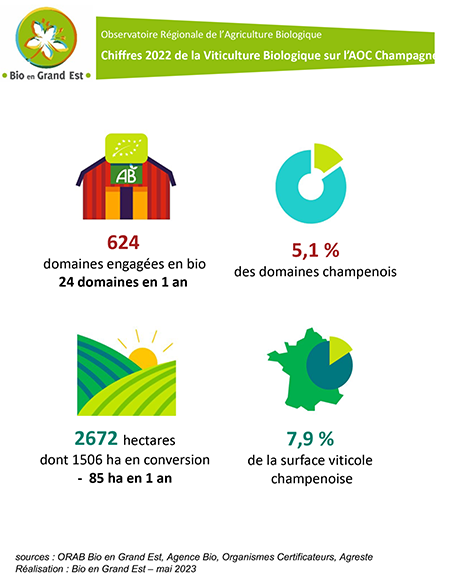Organic viticulture has been practiced in Champagne since the 1970s, first by seven pioneering winegrowers: Jacques BEAUFORT (Ambonnay), Jean BLIARD (Hautvillers), Serge FAUST (Vandières), Roger FRANSORET (Mancy), Georges LAVAL (Cumières), Yves RUFFFIN (Avenay Val d'Or), and Pierre THOMAS (Oger).
It has been officially recognized in France since 1981 and a real enthusiasm for this method of cultivation only appears from the 2000s.
The year 2020, however marked by the health crisis and a significant decline in champagne sales, is a record year in terms of conversion to organic farming, a real turning point taken by professionals in the appellation. The interest in this environmental certification, initially driven by the winegrowers, is now confirmed by that of the cooperatives and Champagne Houses.
At the end of 2021, organic champagne production concerns 624 estates and 2672 hectares of vines, including 1506 hectares in conversion. The organic vineyard now represents 5,1 % of Champagne estates and 7,9 % of the Champagne appellation area.
As a reminder, 21% of French vineyards are grown in AB in 2022.
Chiffres 2022 de l'Observatoire Régional de l'Agriculture Biologique.
Organic Viticulture in Champagne in 2022

Sources : ORAB Bio en Grand EST – AGENCE BIO, Organismes Certificateurs
> Click here to download the figures of Organic Viticulture in Champagne 2022 <
Find the complete list of winemakers engaged in organic certification on the website of the Bio Agency: www.agencebio.org / List of Organic Champagnes Producers members of the ACB